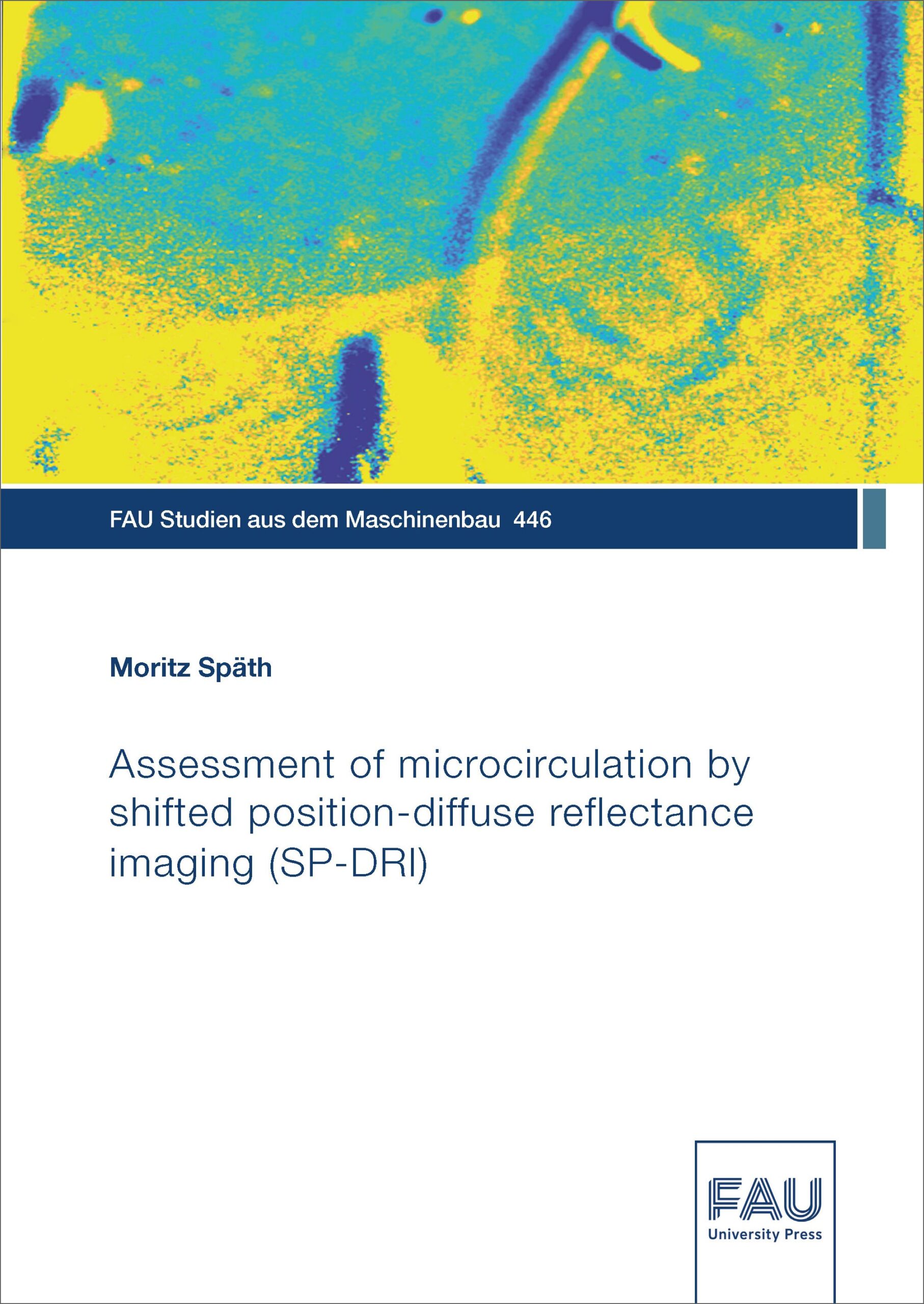Description
Multiple diseases like diabetes mellitus, hypertension or autoimmune diseases may be associated with a wide spectrum of microvascular dysfunctions, microangiopathies and microcirculatory disorders. It can thus be assumed that monitoring the microcirculation could be useful to diagnose various local and systemic circulatory disorders and could be used to monitor critically ill patients. A stand-alone measurement method that allows a reliable detection of impending or manifest local or systemic circulatory malfunctions would be of great value. In this context, shifted position-diffuse reflectance imaging (SP-DRI) offers a promising approach. It is an optical and thus non-invasive method based on the diffuse reflected light. In this doctoral thesis, the SP-DRI method is developed and presented and the algorithms behind it are explained in detail. The method is set in relation to already existing diagnostic approaches for the assessment of the microcirculatory function. The current state of research on SP-DRI is described along with an outline of the future potential of this imaging technique. The SP-DRI approach proved to be highly functional both simulatively and experimentally. Reliable information can be obtained in real time with an easy to implement setup. SP-DRI may thus be an important milestone on the way to early and conveniently diagnosing diseases associated with the constriction or dilation of the arterioles, venules or the capillary bed itself.
In dieser Dissertation wird die SP-DRI-Methode entwickelt, vorgestellt und die dahinter stehenden Algorithmen im Detail erläutert. Die Methode wird in Beziehung zu bereits bestehenden diagnostischen Ansätzen zur Beurteilung der Mikrozirkulation gesetzt. Der aktuelle Stand der Forschung zu SP-DRI wird beschrieben und das Zukunftspotenzial dieser Bildgebungstechnik aufgezeigt. Der SP-DRI-Ansatz erwies sich sowohl simulativ als auch experimentell als in hohem Maße funktionell. Zuverlässige Informationen können in Echtzeit mit einem einfach zu implementierenden Aufbau gewonnen werden. SP-DRI könnte somit ein wichtiger Meilenstein auf dem Weg zu einer frühzeitigen und komfortablen Diagnose von Krankheiten sein, die mit der Konstriktion bzw. Dilatation von Arteriolen, Venolen oder dem Kapillarbett selbst zusammenhängen.


Reviews
There are no reviews yet.